Contents
- 1 Understanding the importance of beef type selection
- 2 The role of seasoning in beef dishes
- 3 The impact of cooking temperatures on beef dishes
- 4 To flip or not to flip: Effective cooking techniques
- 5 Importance of letting the beef rest after cooking
- 6 Veal or beef?
- 7 Common Beef Stew Mistakes
- 8 Not cleaning the grill
- 9 Mistakes People Make When Grilling Steak
- 10 Cooking steak right out of the fridge
- 11 References and Sources
- 12 Frequently Asked Questions
- 13 Conclusion
Cooking beef can be a tricky task. From selecting the right cut of meat to cooking it to perfection, there are several factors that can make or break your dish. In this blog, we will discuss the common mistakes people make when cooking beef dishes and how to avoid them. We will cover everything from selecting the right type of beef to seasoning and cooking temperatures.
We will also delve into the effective techniques of flipping beef while cooking and why letting it rest after cooking is crucial. By the end of this blog, you will be equipped with all the knowledge you need to cook a perfect beef dish every time. So, let’s get started!
Understanding the importance of beef type selection
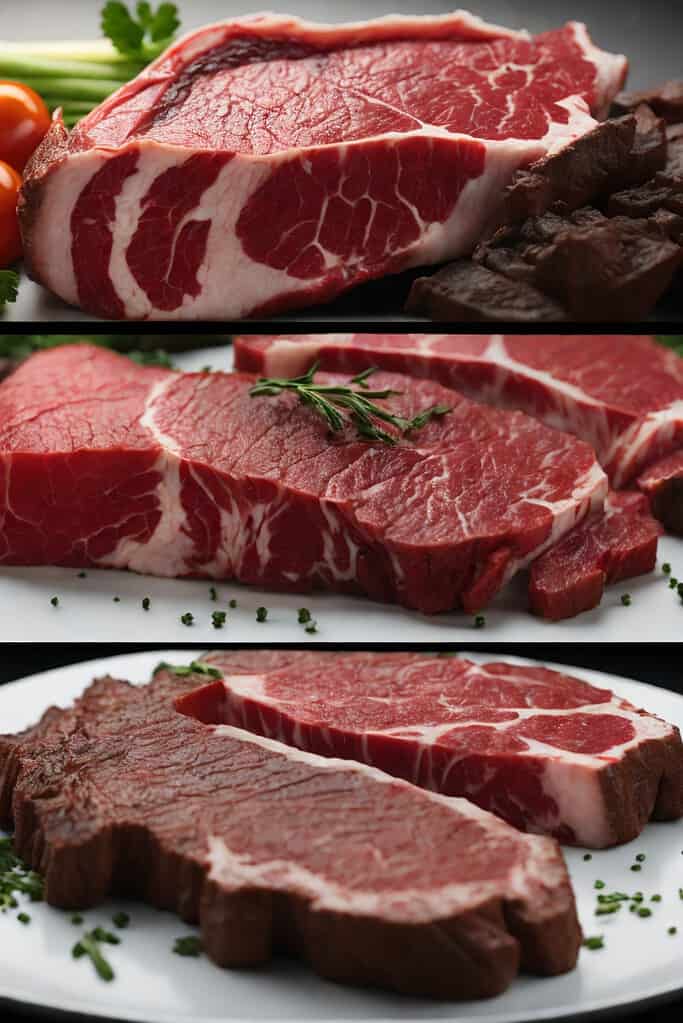
Choosing the right cut of meat for your dish is crucial when cooking beef. Whether you’re making a steak, stew, or barbecue, each cut of meat, including cuts of meat like sirloin, ribeye, and flank steak, has its own unique qualities that affect taste and tenderness. Understanding the difference between grain-fed and grass-fed beef is also important as it can impact the flavor and nutrition profile of the meat. Properly seasoning and marinating the beef enhances the flavor and moisture content, resulting in the perfect meat time thickness.
Additionally, avoiding overcooking or undercooking is essential to ensure the perfect steak or tender beef stew. Finally, letting the beef rest before slicing or serving allows the juices to redistribute, resulting in a more flavorful and tender dish.
How the wrong cut of beef can affect your dish
Choosing the wrong cut of beef can have a significant impact on the taste and overall outcome of your dish. Different cuts require different cooking methods to achieve optimal tenderness and flavor. If you use the wrong cut, you may end up with tough or dry meat that fails to impress. The marbling and fat content of the cut also play a role in the cooking process and final result. It’s important to consider the intended use of the beef, whether it’s for stewing or roasting, to ensure you choose the right cut. Seeking advice from a butcher or experienced cook can help you make the best choice for your desired outcome.
The role of seasoning in beef dishes
Achieving the perfect flavor in beef and veal dishes depends on the right seasoning and aromas. Over-seasoning or under-seasoning can both be common mistakes that ruin the taste. To enhance the natural flavor and aromas, use complementary herbs and spices, avoiding excessive salt as it can overpower the dish. Experiment with different seasonings to find what suits your preferences. Once cooked, it’s important to let the beef rest, allowing the flavors and aromas to meld together. By seasoning properly and giving the beef time to rest, you can ensure a delicious and well-flavored meal.
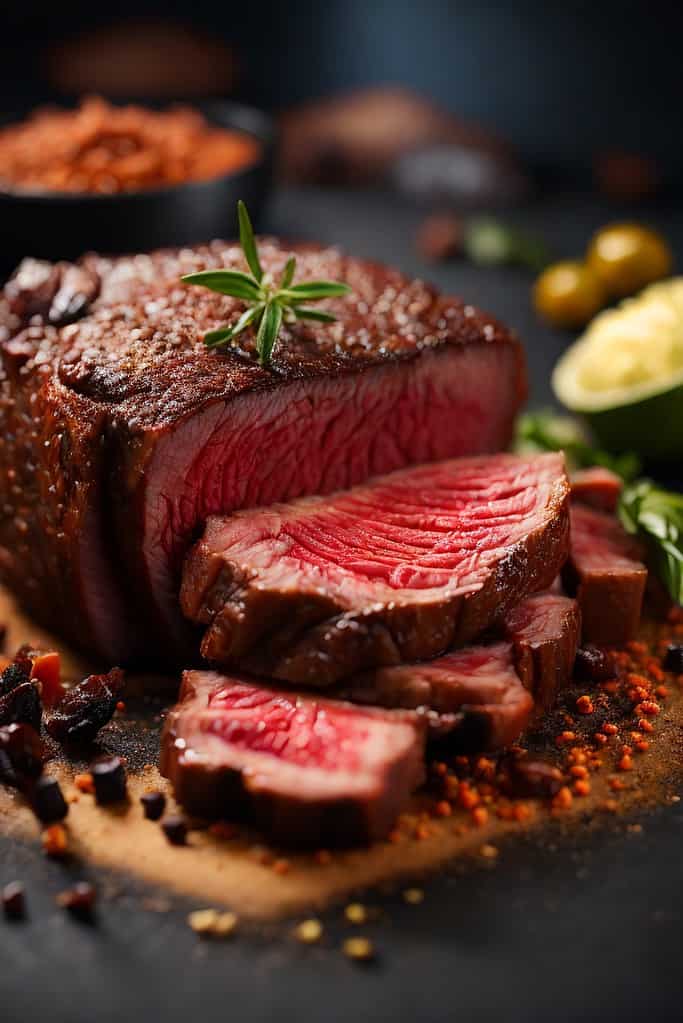
Over-seasoning vs. Under-seasoning: Striking the right balance
Finding the perfect balance of seasoning when cooking beef and poultry is crucial to achieving delicious results. Over-seasoning can overpower the natural flavor of beef, while under-seasoning can leave your dishes tasting bland. It’s best to start with a small amount of seasoning and gradually adjust to taste. Keep in mind that different cuts of beef and poultry, such as chicken or turkey, may require different levels of seasoning. Don’t be afraid to experiment with various herbs, spices, and marinades to find your preferred balance of flavors, especially for grillers. And remember to let the beef and poultry rest before serving to allow the flavors to fully develop.
The impact of cooking temperatures on beef dishes
Proper cooking temperatures play a crucial role in the final outcome of beef dishes, especially when it comes to a good steak. Overcooking beef can result in tough and dry meat, while undercooking can be a safety risk. Different cuts of beef require different cooking temperatures and methods to achieve the desired level of doneness. To ensure accuracy, using a meat thermometer is highly recommended. Resting the cooked meat allows the juices to redistribute, resulting in a tender and flavorful dish.
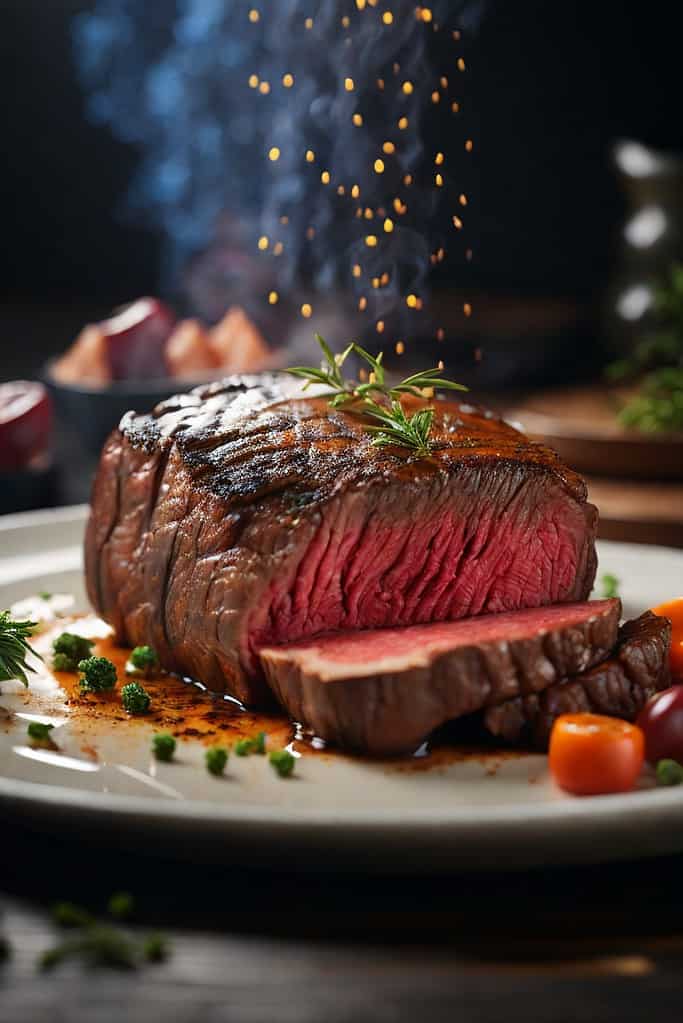
By understanding and controlling the cooking temperatures, home cooks can avoid common mistakes and achieve perfectly cooked beef dishes. One useful tool for achieving the perfect texture is to grate garlic and mix it with butter before cooking the steak, which is commonly known as the grates.
Why too low a heat can be a big mistake?
Cooking beef at a low heat can result in tough and dry meat. The proteins contract, squeezing out moisture. To cook beef the right way and avoid this mistake, preheat your pan or grill for proper cooking temperature. Cooking over medium-high heat seals in juices and creates a delicious crust.
Skimping on a meat thermometer
When cooking beef, one of the biggest mistakes people make is not using a meat thermometer. Some people may think that they can tell when the meat is done by just looking at it or cutting into it, but this can lead to overcooking or undercooking. Skimping on a meat thermometer can also be a safety issue, as undercooked beef can contain harmful bacteria. It’s important to invest in a good quality meat thermometer and use it to ensure that your beef is cooked to the correct temperature for safe consumption and optimal taste.
To flip or not to flip: Effective cooking techniques
When it comes to cooking beef, one of the most common mistakes to avoid is flipping the meat too often, as excessive flipping can prevent a flavorful crust from forming. It’s also important not to overcrowd the pan, as this can result in steaming rather than searing the meat. Another mistake to avoid is using high heat for too long, as it can cause the beef to become dry. Letting the meat rest before cutting into it is crucial, as it allows the juices to redistribute and ensures a tender result.
Lastly, using a sharp knife is essential for cleanly slicing the meat without tearing it. By using foil to cover the meat while it rests, you can achieve a perfectly cooked beef dish while avoiding the most common mistakes, including the need to clean grill.
The dangers of over-flipping your beef while cooking
Over-flipping your beef while cooking can have negative consequences on the texture and taste of your dish. When you flip beef too often, it can result in tougher meat and uneven cooking. To avoid this, resist the urge to peek or move the beef around too much while it’s cooking. Instead, let it cook undisturbed to allow for even browning and proper cooking. Using a meat thermometer is also crucial to ensure that you reach the desired internal temperature without overcooking the beef. Finally, once the beef is cooked, allow it to rest for a few minutes before slicing or serving to retain its moisture and tenderness.
Importance of letting the beef rest after cooking
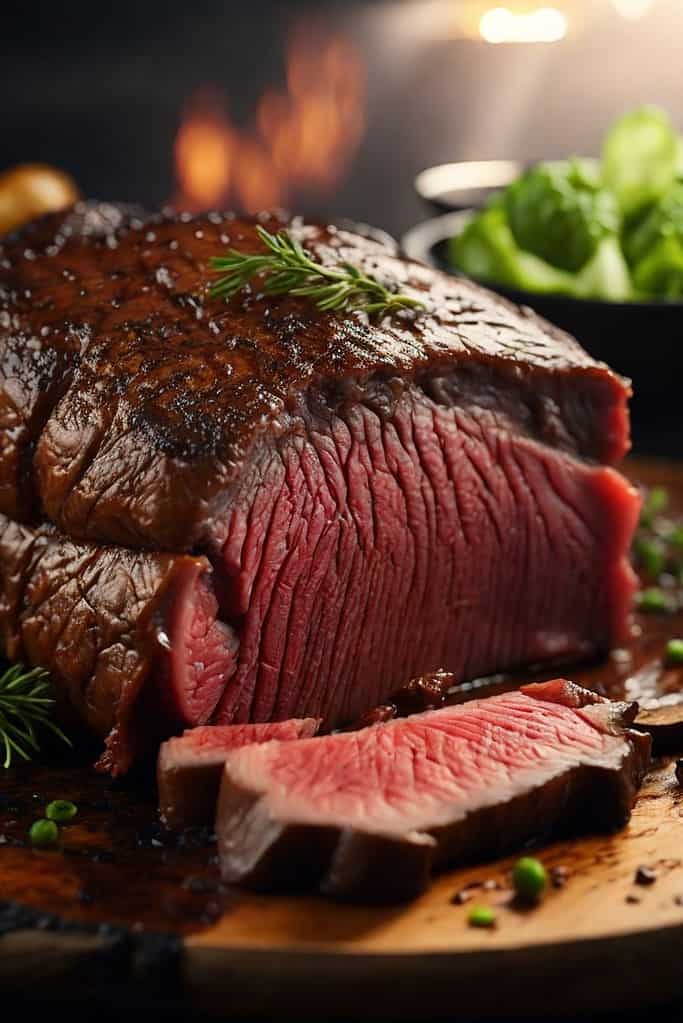
Letting the beef rest after cooking is a good idea and an important step to ensure a tender and juicy result. Overcooking can make the beef tough and dry, so allowing it to rest helps retain moisture. It’s also crucial to use the right cut of beef for your recipe, as different cuts have varying textures and flavors. Adding too much seasoning or sauce can overpower the natural flavor of the beef, so moderation is key. By not letting the beef rest after cooking, the juices can escape, resulting in a drier meat. Additionally, adding a sprinkle of black pepper and cutting the beef against the grain can enhance tenderness and make it easier to chew.
What happens if you cut into the beef too soon?
Cutting into the beef too soon can result in dry and tough texture as the juices escape. To avoid this, allow the beef to rest for 5-10 minutes after cooking before slicing it. This resting period allows the juices to redistribute, resulting in a tender and juicy texture due to carryover cooking. Use a meat thermometer to ensure desired doneness.
Veal or beef?
When it comes to cooking with beef, one common mistake is confusing it with veal. While both meats come from cattle, veal is meat from young calves while beef comes from older cows. It’s important to use the correct type of meat in your recipes as they have different textures and flavors. For example, veal is often more tender and delicate than beef, making it great for dishes like schnitzel or scallopini. On the other hand, beef is often used in heartier dishes like stews or roasts. Knowing the difference between these meats can help you elevate your cooking and create delicious meals every time.
Common Beef Stew Mistakes
Beef stew is a hearty and satisfying meal that’s perfect for chilly days. However, there are some common mistakes that people make when preparing this dish. The five most common beef stew mistakes include using the wrong cut of meat, not searing the meat properly, adding too much liquid, overcooking the vegetables, and not seasoning properly. By avoiding these mistakes, you can ensure that your beef stew turns out perfectly every time – rich, flavorful, and full of tender chunks of beef and vegetables.
Not cleaning the grill
When it comes to grilling beef, there are many common mistakes that people make. One of the most crucial mistakes is not cleaning the grill before and after use. Failing to clean the grill can lead to a buildup of residue and grease, which can affect the taste of your beef, or even worse, create a fire hazard. To avoid this mistake, take time to clean your grill after each use by using a wire brush to scrub away any leftover food particles and grease. This will ensure that your grill stays in good condition and ready to use whenever you need it.
Mistakes People Make When Grilling Steak
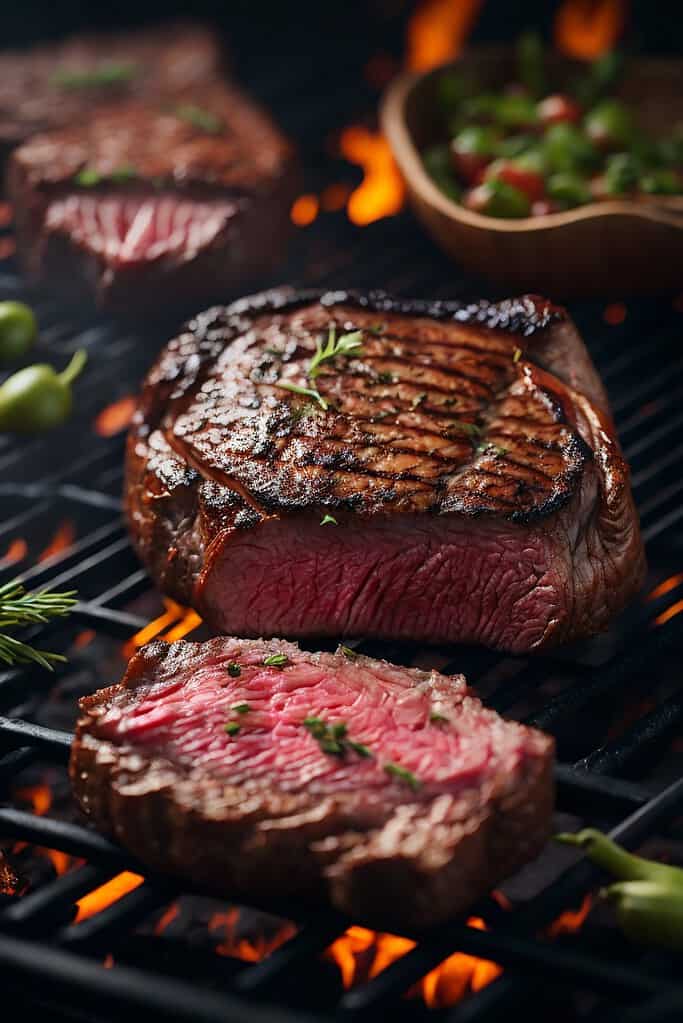
Grilling a steak can be a fantastic way to enjoy the delicious taste of beef. However, there are some common mistakes that people make when grilling steak that can ruin the entire experience. One of the most common mistakes is not letting the meat rest before cooking it. Many people make the mistake of putting their steak right on the grill without letting it come to room temperature first.
Another mistake is not seasoning the meat properly or over-seasoning it. Additionally, overcooking or undercooking the steak can also be disastrous for its taste and texture. By avoiding these common mistakes, you can enjoy a perfectly grilled steak every time!
Cooking steak right out of the fridge
One of the most common mistakes when using beef is cooking steak right out of the fridge. This can cause uneven cooking, resulting in a tough and chewy steak. It’s important to let the meat come to room temperature before cooking to ensure even cooking throughout. Leaving your steak on the counter for about 30 minutes before cooking can help you achieve a perfect sear and a juicy, tender center. So next time you’re ready to cook up some beef, make sure to give it some time outside the fridge first!
References and Sources
- https://www.usda.gov/media/blog/2013/01/28/whats-your-beef-prime-choice-or-select
- https://www.mychicagosteak.com/steak-university/grain-fed-vs-grass-fed-steaks
- https://www.eatthis.com/how-to-salt-steak/
- https://www.cookinglight.com/cooking-101/why-do-you-bring-steak-to-room-temp-before-cooking
- https://www.clovermeadowsbeef.com/salting-steak
- https://theorganicbutcher.com/blogs/news/44363009-how-to-cook-100-grass-fed-steaks-there-is-a-difference
Frequently Asked Questions
What are some common mistakes to avoid when cooking beef on the stovetop?
The best way to avoid these stovetop blunders when cooking beef is to follow these tips: 1) Preheat the pan to ensure even cooking. 2) Avoid overcrowding the pan to prevent steaming instead of searing. 3) Limit flipping to allow a good crust to form. 4) Remember to let the beef rest to prevent dry meat.
How can I prevent my beef from overcooking or becoming tough?
To prevent your beef from overcooking or becoming tough, use a meat thermometer to ensure it’s cooked to the desired temperature. Let it come to room temperature before cooking and opt for medium heat instead of high heat to maintain tenderness and avoid reaching the smoke point. Consider marinating the beef beforehand for added tenderness, as it can help break down the connective tissue and muscle fibers. Understanding the smoke point of the oil you use is also important, as it can affect the flavor and quality of the beef.
What are some recommended cooking times and temperatures for different cuts of beef?
Recommended cooking times and temperatures vary depending on the cut of beef and the desired meat time. For rare beef, cook ribeye, sirloin steak, and tenderloin at 125°F (51°C) internally. For medium-rare, cook chuck roast, brisket, and flank steak at 135°F (57°C). For medium-well, cook round roast, rump roast, and eye of round at 145°F (63°C) degrees fahrenheit. Always use a meat thermometer to ensure desired meat time and doneness.
Are there any safety precautions I should keep in mind when handling raw beef?
When handling raw beef, it is important to follow food safety precautions, including proper food safety practices. Always wash your hands thoroughly before and after handling raw meat. Use separate cutting boards, utensils, and dishes to avoid cross-contamination. Cook beef to an internal temperature of 160°F (71°C) to kill bacteria. Store raw beef in the refrigerator below 40°F (4°C) and cook it within two days of purchase.
Are there any cooking techniques that can help tenderize beef?
When it comes to tenderizing beef, there are a few cooking techniques you can use. Marinating beef in an acidic mixture can help break down tough fibers. Slow-cooking or braising beef at a low temperature can also make it tender. Another option is using a meat mallet to pound the beef before cooking.
Conclusion
To conclude, cooking beef dishes requires attention to detail and avoiding common mistakes that can affect the flavor and texture of your dish. It starts with selecting the right cut of beef for your recipe, as different cuts have different levels of tenderness and flavor. Seasoning plays a crucial role, and striking the right balance is key to enhancing the natural flavors of the beef. Cooking temperatures also play a significant role, as cooking at too low a heat can lead to tough and chewy meat. Flip your beef sparingly to ensure even cooking and avoid over-flipping, which can result in the loss of juices.
Lastly, always let your beef rest after cooking to allow the juices to redistribute and ensure a tender and flavorful final product. So next time you’re cooking beef, keep these tips in mind to avoid common mistakes and elevate your dishes to new heights.

